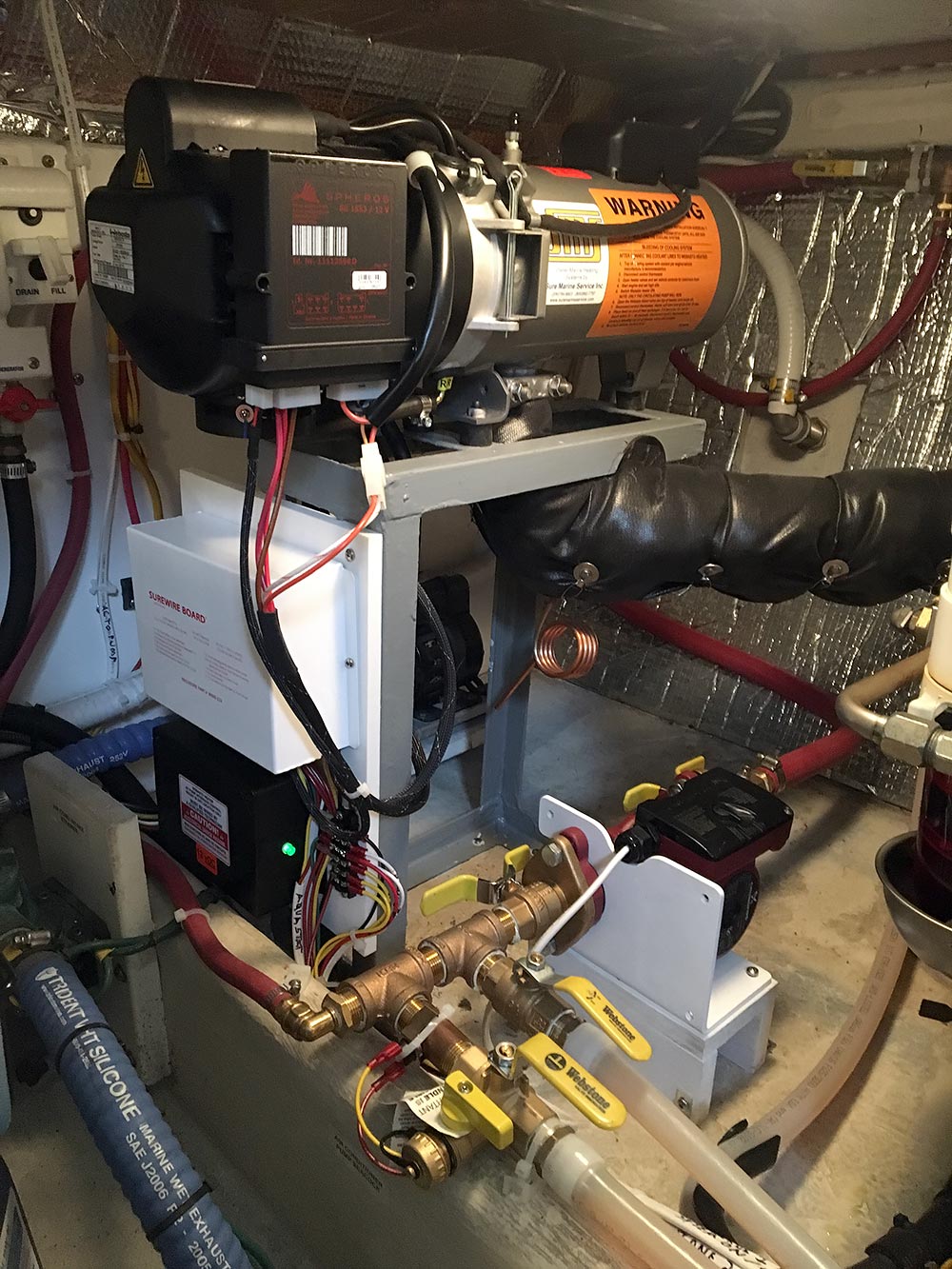I use He Pex tubing and full flow fittings. They never leak, so I don’t need to come back. The advantages of a hydronic system is individual room heat control and even heat over the entire boat and works well on small or large boats.
Forced air systems work much like the furnace in your house with a single thermostat to control the temperature. They work well on boats up to around forty five feet.
Webasto makes a wide range of marine forced air furnaces ranging from the Air Top 2000 at 7000 BTU. I have used these heaters on a number of smaller fishing boats with a small diesel tank added. So if you are a winter fisherman this is a really good way to go. or an air top 4000 for boat that are a little larger.
The Air top 5500 at 17,000 BTU diesel heater. I have used theses furnaces on sailboats up to 42 feet and gotten good results. Air top units use diesel from your existing fuel tank. No need to use kerosene with these heaters. The ducting is a 4″ tube and can be ran up to ten feet be for the first outlet. the ducting can be sized down from that point on to heat individual cabins or the head. Air top units are a good value, less expensive than hydronic heat and will extend your boating season.
Hydronic boiler systems come in the widest variety and sizes ranging from the TSL 17 at 17000 BTU’s to the DBW 2020 or 300 at 80,000 BTU’s can heat boats as big 60′. If more heat is required we can install an Olympia boiler system I have used these on large commercial steel boats with great results. As I said hydronic furnaces use a coolant or antifreeze and a series of Real fan heaters to move the heat. Real fan haters come in all shapes and sizes to fit every space on the your boat. There is even one to fit under the toe space in the galley for warm feet in the morning. Real fan heaters can be individually controlled, with a High Low fan switch or with their own thermostat for cabins or salon spaces. Other advantages of hydronic heating is on demand hot water, with the ever hot system or window defrosters. Bridge heat is another option and I can install defrosters on the bridge enclosure windshield. Having heat in the cockpit area of your sailboat is a option as well.
Sizing the furnace to your boat is the first step to deciding what heater is going to best fit your needs. It is very important to get it right. If the heater is too small it will over work and not last as long (don’t under size your furnace it will not pay in the long run.) Over sizing the furnace will make it short cycle. We need to know how many BTU’s is required for any given space. To get this take the (height X width X length = volume) I multiply that number x-12 for lower well insulated decks. Use x 15 for upper decks with a lot of windows. If the windows are really large like on the bridge or have a lot of aluminum in the trim I use x-17 as my multiplier. To get the BTU total add up all the areas of your boat together. When measuring odd shapes just find the average center, it will be close enough. (Save these numbers they will be need to size the Real fan heaters later.) The total BTU area will be the right Webasto furnace for your boat.
Maintenance all diesel furnaces need some care. Replacing the fuel filter once a year is a good a practice. On the Webasto 2010 or 2020 it is good to replace the nozzle and coolant conditioner cartridge. Running diesel heaters on low voltage can slow the fan speed and can create carbon build up in the furnace. Black smoke at start up is a indicator the furnace has carbon build up and is in need of service. White smoke can be a fuel problem. The first thing to do is to check your fuel filter. If the heater will not start don’t keep trying to start it, that will only dump more fuel into the furnace. It can get on the exhaust insulation, making more work and cost.
I hope this answers a few of your questions about heating. Please visit my photo gallery to see my work.
Steve

















